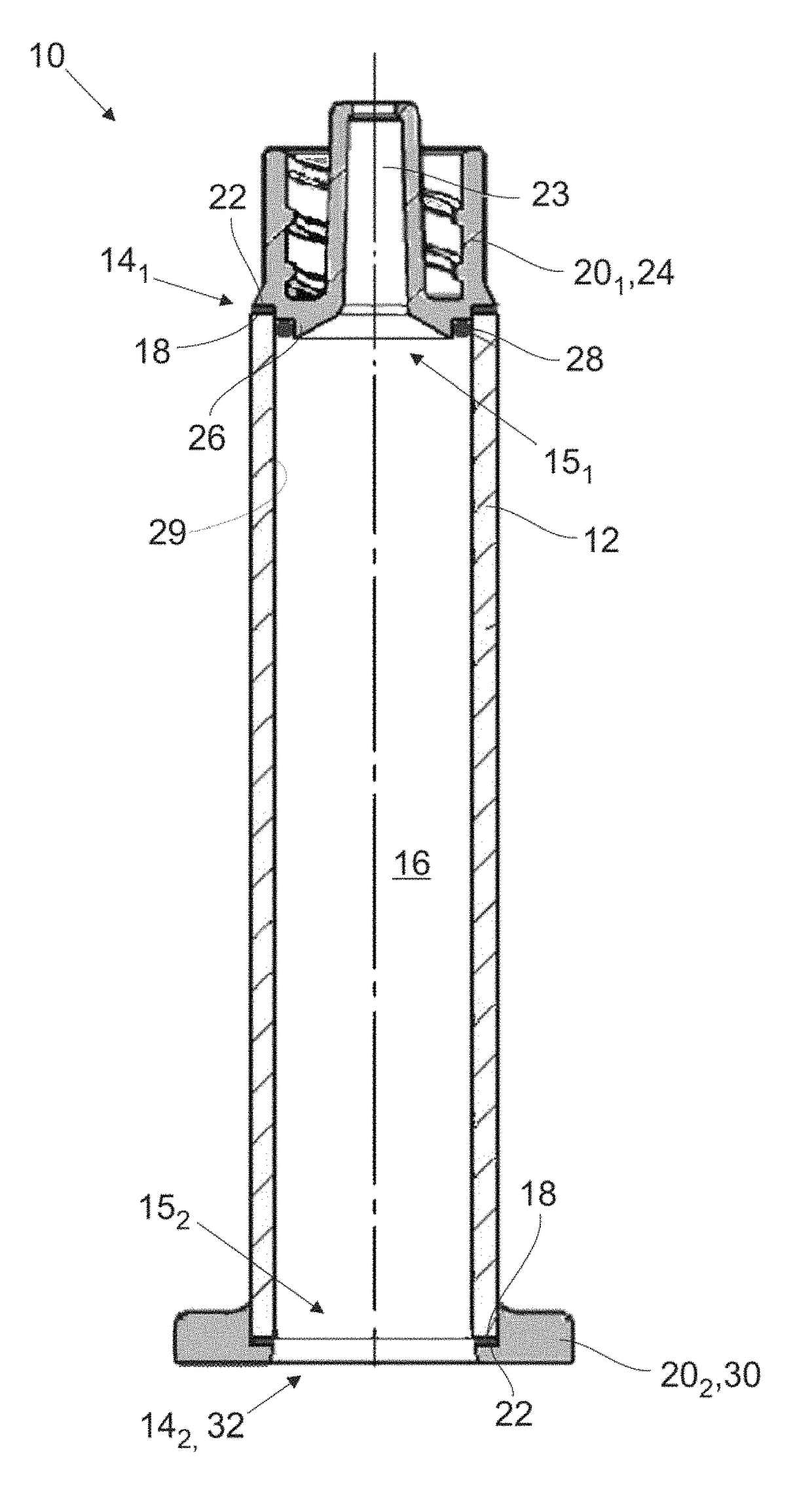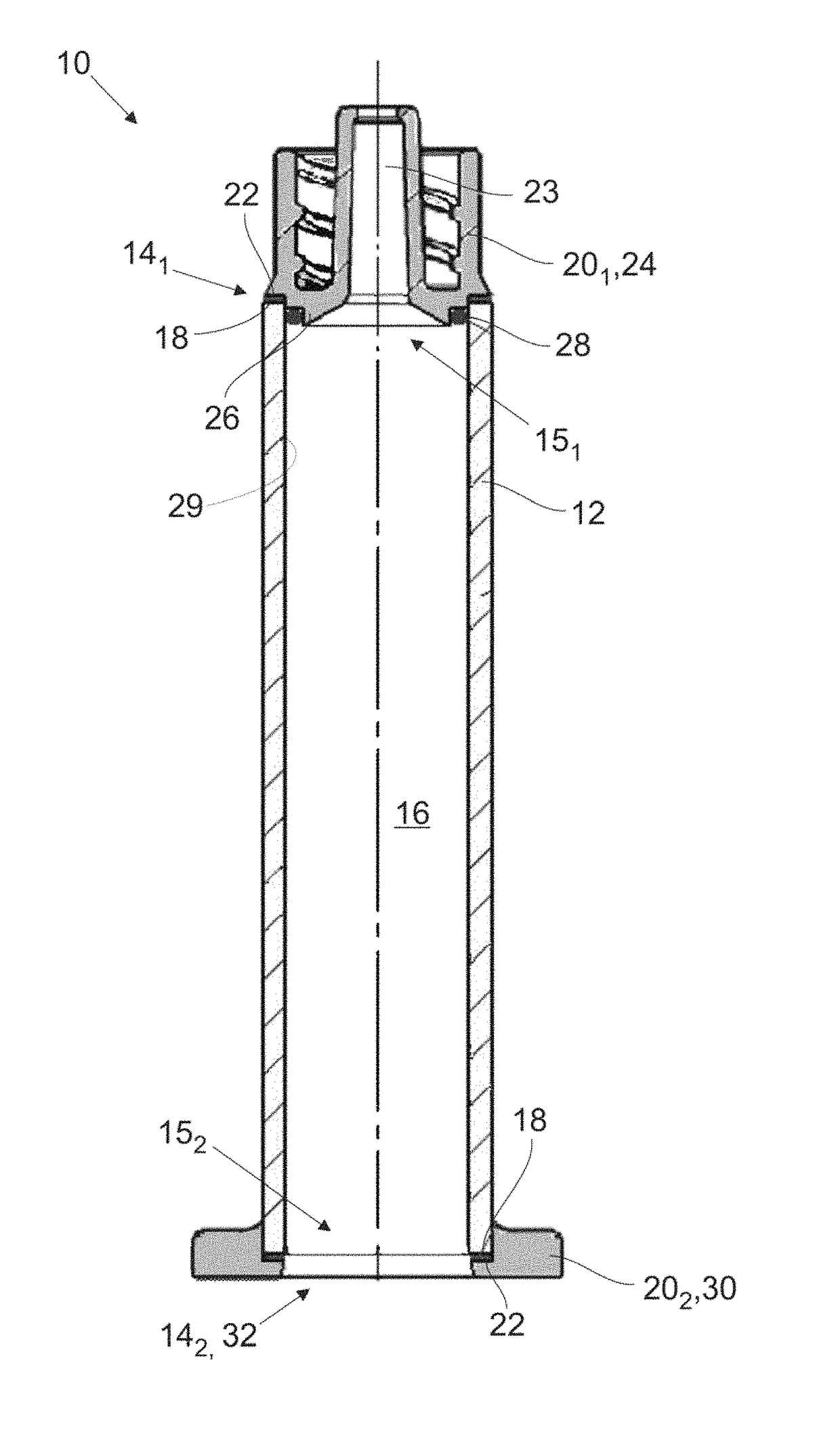Multi-component container
a multi-component, container technology, applied in the field of containers, can solve the problems of inability to manufacture thin channels with the desired accuracy, channel closure, and contamination risk of substances and/or syringes, and achieve excellent inert properties, high diffusion resistance, and cost-effective production
- Summary
- Abstract
- Description
- Claims
- Application Information
AI Technical Summary
Benefits of technology
Problems solved by technology
Method used
Image
Examples
Embodiment Construction
[0033]The container 10 according to the invention shown in the FIGURE comprises a glass body 12 which in the illustrated exemplary embodiment has a hollow cylindrical shape with a distal end 141 with a first opening 151 and a proximal end 142 with a second opening 152. The glass body 12 encloses a cavity 16, in which a substance (not shown) such as a pharmaceutical substance can be stored. At each of the ends 141, 142 the glass body 12 has an end face 18, respectively. At the distal end 141 a first connecting element 201 and at the proximal end 142 a second connecting element 202 are respectively connected to the glass body 12 by means of a joint 22 provided by a joining process, wherein the joint 22 is arranged on the end faces 18 of the glass body 12. The connecting elements 20 are made of a thermoplastic or thermosetting plastic material or comprise these types of plastic materials, which enables the joint 22 with the glass body 12. The first connecting element 201 arranged at th...
PUM
 Login to View More
Login to View More Abstract
Description
Claims
Application Information
 Login to View More
Login to View More - R&D
- Intellectual Property
- Life Sciences
- Materials
- Tech Scout
- Unparalleled Data Quality
- Higher Quality Content
- 60% Fewer Hallucinations
Browse by: Latest US Patents, China's latest patents, Technical Efficacy Thesaurus, Application Domain, Technology Topic, Popular Technical Reports.
© 2025 PatSnap. All rights reserved.Legal|Privacy policy|Modern Slavery Act Transparency Statement|Sitemap|About US| Contact US: help@patsnap.com


